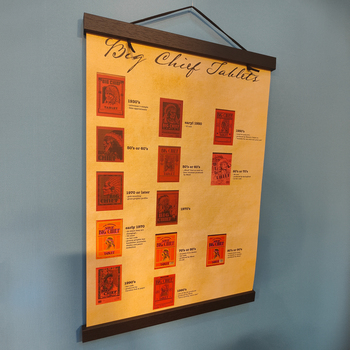
A tale of ink and paper
 The notebook has made a fascinating journey through history, from its beginnings on wax tablets and rolls of parchment to the many varied forms we know today. It remains an essential tool for recording our thoughts, ideas and memories, and will undoubtedly continue to play a crucial role in our creative and intellectual development.
The notebook has made a fascinating journey through history, from its beginnings on wax tablets and rolls of parchment to the many varied forms we know today. It remains an essential tool for recording our thoughts, ideas and memories, and will undoubtedly continue to play a crucial role in our creative and intellectual development.The history of the notebook is peopled with fascinating personalities, including Leonardo Da Vinci, Theodor Fontane, Ernest Hemingway, and Pablo Picasso. In the creative world, carrying a notebook at all times is an unwritten rule. Spontaneous ideas and fleeting impressions can be written down immediately before they become lost in the bustle of everyday life. Creative people, whether writers, artists or scientists, have the gift of perceiving nuances that they want to immortalize in their works.
Leonardo Da Vinci always wore his notebook on his belt, and it reflected his impressive range of interests, from art and music to geometry, astronomy, biology and anatomy. The 67 surviving notebooks left by Theodor Fontane document his creative process with collections of sketches and texts in various creative phases. Pablo Picasso surpassed Fontane with a whopping 175 sketchbooks, which he guarded like a treasure and which were visual diaries of his ideas and visions.
The origins of the notebook date back to the ancient Egyptians, who used papyrus to record important information. Over time, the idea of personal record-keeping evolved. In ancient Rome, scholars and philosophers used wax-covered tablets on which they could write with a stylus.
In the Middle Ages, parchment and parchment rolls were used for handwritten notes, but in the 15th century, Johannes Gutenberg’s letterpress printing with movable type revolutionized the availability of writing materials and books.
The modern notebook as we know it today began in the 17th century as paper gradually became more affordable. The first bound books, often called diaries or notebooks, were used by wealthy people and intellectuals to record thoughts and ideas. In the 18th century, notebooks became more popular and accessible to a wider audience.
Today, notebooks are available in a variety of materials and serve different purposes. These indispensable tools for students, professionals and artists have evolved into digital forms. A notebook differs from a diary in that it is neither bound by the rules of chronology nor dedicated to personal revelations. In terms of the subject-matter, we are completely free to choose how we use our notebooks and explore and nurture our own talents and desires.
What can we learn from the fervent notebook keepers of the past? With a notebook, we already have the means to success in our hands. We then only have to write down the story of our success.




